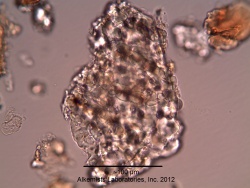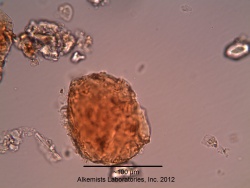Serenoa repens (fruit)
From AHPA Botanical Identity References Compendium
(Difference between revisions)
(to new\) |
|||
| Line 1: | Line 1: | ||
| − | + | {{DISPLAYTITLE:''Serenoa repens'' (fruit)}} | |
| − | '' | + | =Nomenclature= |
| − | + | =Botanical Voucher Specimen= | |
| − | + | =Organoleptic Characteristics= | |
| − | + | =Macroscopic Descriptions= | |
| − | + | =Microscopic Characteristics= | |
| − | = | + | {| border=1 |
| − | = | + | | |
{{Microscopy | source=Elan M. Sudberg, Alkemist Laboratories | {{Microscopy | source=Elan M. Sudberg, Alkemist Laboratories | ||
| companyimage= AP-LOGO-Laboratories Crop - Copy.jpg | | companyimage= AP-LOGO-Laboratories Crop - Copy.jpg | ||
| − | | companyURL=http://www. | + | | companyURL=http://www.alkemist.com |
| − | + | ||
| caption1=Endocarp showing numerous small pits observed at 400x with Acidified Chloral Hydrate Glycerol Solution. | | caption1=Endocarp showing numerous small pits observed at 400x with Acidified Chloral Hydrate Glycerol Solution. | ||
| − | | description= | + | | description=Cellular structures identified in this botanical specimen are the endocarp showing numerous small pits and the cells of the sarcocarp filled with reddish brown pigment when observed at 400x with Acidified Chloral Hydrate Glycerol Solution. |
| − | + | ||
| − | + | ||
| − | + | ||
| reference=British Pharmacopoeia, 2011 | | reference=British Pharmacopoeia, 2011 | ||
| }} | | }} | ||
| + | {| border=1 | ||
| + | | {{botcon |companyimage= AP-LOGO-Laboratories Crop - Copy.jpg | ||
| + | | companyURL= http://www.alkemist.com}} || {{botcon |companyimage= AP-LOGO-Laboratories Crop - Copy.jpg | ||
| + | | companyURL= http://www.alkemist.com}} | ||
| + | |- | ||
| + | | {{botimg |mainimage= Saw_Palmetto.jpg | ||
| + | |caption1= Endocarp showing numerous small pits observed at 400x with Acidified Chloral Hydrate Glycerol Solution. | ||
| + | |source= Elan M. Sudberg, Alkemist Laboratories http://www.alkemist.com}} | ||
| + | | {{botimg |mainimage= Saw_Palmetto-1.jpg | ||
| + | |caption1= Cells of the sarcocarp filled with reddish brown pigment observed at 400x with Acidified Chloral Hydrate Glycerol Solution. | ||
| + | |source= Elan M. Sudberg, Alkemist Laboratories http://www.alkemist.com}} | ||
| + | |} | ||
| + | |} | ||
| − | = | + | =High Performance Thin Layer Chromatographic Identification= |
| − | = | + | |
| + | =Supplementary Information= | ||
| + | |||
| + | =Sources= | ||
| + | |||
| + | <references /> | ||
| + | [[Category:Botanical]] | ||
Revision as of 19:52, 18 February 2014
Contents |
Nomenclature
Botanical Voucher Specimen
Organoleptic Characteristics
Macroscopic Descriptions
Microscopic Characteristics
|
High Performance Thin Layer Chromatographic Identification
Supplementary Information
Sources
- ↑ Elan M. Sudberg, Alkemist Laboratories http://www.alkemist.com
- ↑ Elan M. Sudberg, Alkemist Laboratories http://www.alkemist.com
- ↑ Elan M. Sudberg, Alkemist Laboratories http://www.alkemist.com



